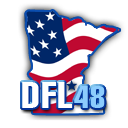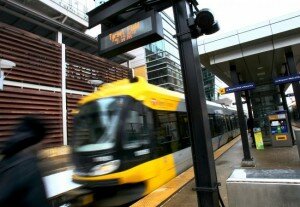Grow with Us Plant Sale!
Get all of your garden needs and help support DFL48! This year, we’re offering you plant cards at both Gerten’s Greenhouses and Garden Center in Inver Grove Heights and Wagner’s Greenhouse in Minneapolis and Bloomington.
Tweets by @DFL48
21
Suburban Mayors Support Investing in Transportation Infrastructure
The following is the full content of a commentary that appeared in the April 21, 2015 StarTribune signed by 10 suburban mayors including Nancy Tyra-Lukens of Eden Prairie and Terry Schneider of Minnetonka:
Businesses in our suburban communities need to access a workforce that lives beyond the borders of their cities.
As suburban mayors, we aspire to see our cities thrive. We know that hard work and careful investment are essential to realizing those goals.
Through a challenging recession, public and private partnerships began to help our region prosper. Thanks to comprehensive planning and to the success of individual Minnesotans, our metropolitan area came roaring out of the Great Recession and is now touted as having one of the most successful regional economies in the country.
As our economy improves, our population continues to expand. By 2040, our state is projected to add more than 1 million residents, with 800,000 of those new arrivals living in the metro area. To accommodate this growth and reach our full potential, we need to make smart public investments to ensure continued private-sector success. We must invest in a first-rate education system, in research and development to help companies succeed and, just as important, in a world-class transportation system.
Effective transit operations in the metro area are critical to the state’s economic success. Transit moves our metro workforce; at present, nearly 40 percent of people who work in downtown Minneapolis or St. Paul depend on it to get to work. The number of people using transit is growing; between 2000 and 2010, transit trips increased by 25 percent as a percentage of all trips in the Twin Cities region, and use of park-and-ride facilities grew by more than 6 percent from 2012 to 2013 alone. This trend is expected to continue, and by 2040 we expect that our transit system will need to provide approximately 180 million rides per year to keep up with demand.
Transit is important to employees, but it is equally important to the businesses that employ them and to the communities in which they live and work. Growing businesses in suburban communities have an increasing need to access a workforce beyond the borders of their cities, and transit provides a way to bring more employees into the suburbs without substantially increasing road traffic. Transit is critical to ensuring that suburban communities are viable locations for attracting economic development and to providing employment opportunities for job-seekers across the region.
Transit does not just move our workforce; it moves goods, services and people more efficiently. While transit carries 20 to 35 percent of the people traveling on local roads, it represents only 1 to 5 percent of the vehicles using our roadways. Transit reduces congestion and allows workers to get to work on time, regardless of their chosen mode.
Right now, two very different transportation plans are being considered at the Legislature. Gov. Mark Dayton and the Senate have proposed similar plans that would invest $6 billion over the next 10 years in 2,200 miles of roads and more than 400 bridges statewide. That investment would also create 20 new dedicated rapid-transit ways, which would increase ridership by 80 percent. This transportation bill anticipates appropriately the needs of our system caused by future population growth.
In contrast, the House proposal addresses some of the need for investment in roads and bridges, but its funding ideas fall short of the levels needed for transit. Under this proposal, metro-area transit operations would be cut by 25 percent in the next five years, and new transit development would be nearly impossible, at the same time our population is growing.
If we choose to make smart investments in transit, the return could be economically staggering. Transit has shown that it can yield economic benefits; more than 15,000 housing units have been built along the Blue Line since 2004, and more than $2.8 billion in development has been generated along the Green Line between Minneapolis and St. Paul.
We have a chance this year to invest in a transportation infrastructure that would propel us into a prosperous economic future. In order to do this, we need a comprehensive strategy that emphasizes all modes of transportation, including transit. If we do this right, transportation investments now will help set the stage for prosperity in Minnesota for years to come.
This article was signed by the following mayors: Jim Hovland ofEdina, Nora Slawik of Maplewood, Nancy Tyra-Lukens of Eden Prairie, Terry Schneider of Minnetonka, Scott Lund of Fridley, Sandy Martin of Shoreview, Brad Tabke of Shakopee, Debbie Goettel of Richfield, Mike Maguire of Eagan and Gene Winstead ofBloomington.
Here’s the link to the original article
 DFL48
DFL48
